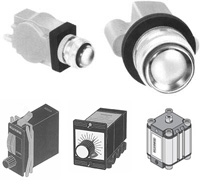How do Pneumatic Valves Increase Safety of Pneumatic Control Systems?

What is the science behind pneumatic control systems? Most people have heard of hydraulics, which uses pressure as a form of automation, and although pneumatics is similar, it is not the same. Pneumatic control systems provide practical actions for a wide array of industries and businesses. To ensure that systems run smoothly and safely, using a properly working pneumatic valve is important.
Pneumatic Valves
What is a pneumatic control system? These controls are designed to use differential pressure and flow that push diaphragms that are connected to the mechanical valve. The systems are used to operate switching, which includes opening and closing valves. Pneumatic controls can also move dampers. To ensure the highest levels of safety, engineers need to be in total control of flow control valves. These specific pneumatic valves are useful because they control the exact amount of flow produced by the actuator. When there are issues with pneumatic valves, cylinders become erratic and difficult to move.
The purpose of a pneumatic valve is to adjust the airflow of a pneumatic control system (only in one direction). The goal of the valve is to achieve a free flow of air in the opposite direction. There are two main types of flow control valves, which should not be used interchangeably.
- Meter-In Valves – these valves are designed to restrict the flow of gas or air that goes to an actuator
- Meter-Out – these valves control the exhaust flow from the actuator
Related Reading


- Ellis/Kuhnke Controls
132 Lewis Street Unit A-2, Eatontown, N.J. 07724
Phone: 1-800-221-0714
Fax: 732-291-8154
Email: Info@ekci.com
- Home Pneumatic Controls Technical Info CAD Drawings Contact Us Pneumatic Timers Blog Site Map
